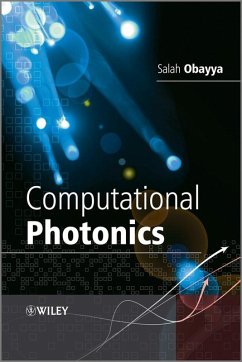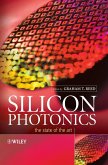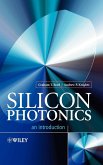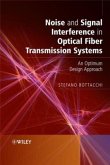This book explores the state-of-the art in computational modelling techniques for photonic devices
In this book, the author provides a comprehensive coverage of modern numerical modelling techniques for designing photonic devices for use in modern optical telecommunications systems. In addition the book presents the state-of-the-art in computational photonics techniques, covering methods such as full-vectorial finite-element beam propagation, bidirectional beam propagation, complex-envelope alternative direction implicit finite difference time domain, multiresolution time domain, and finite volume time domain. The book guides the reader through the concepts of modelling, analysing, designing and optimising the performance of a wide range of photonic devices by building their own numerical code using these methods.
Key Features:
Provides a thorough presentation of the state-of-the art in computational modelling techniques for photonics
Contains broad coverage of both frequency- and time-domain techniques to suit a wide range of photonic devices
Reviews existing commercial software packages for photonics
Presents the advantages and disadvantages of the different modelling techniques as well as their suitability for various photonic devices
Shows the reader how to model, analyse, design and optimise the performance of a wide range of photonic devices by building their own numerical code using these methods
Accompanying website contains the numerical examples representing the numerical techniques in this book, as well as several design examples
This book will serve as an invaluable reference for researchers, optical telecommunications engineers, engineers in the photonics industry. PhD and MSc students undertaking courses in the areas of photonics and optical telecommunications will also find this book of interest.
Hinweis: Dieser Artikel kann nur an eine deutsche Lieferadresse ausgeliefert werden.
In this book, the author provides a comprehensive coverage of modern numerical modelling techniques for designing photonic devices for use in modern optical telecommunications systems. In addition the book presents the state-of-the-art in computational photonics techniques, covering methods such as full-vectorial finite-element beam propagation, bidirectional beam propagation, complex-envelope alternative direction implicit finite difference time domain, multiresolution time domain, and finite volume time domain. The book guides the reader through the concepts of modelling, analysing, designing and optimising the performance of a wide range of photonic devices by building their own numerical code using these methods.
Key Features:
Provides a thorough presentation of the state-of-the art in computational modelling techniques for photonics
Contains broad coverage of both frequency- and time-domain techniques to suit a wide range of photonic devices
Reviews existing commercial software packages for photonics
Presents the advantages and disadvantages of the different modelling techniques as well as their suitability for various photonic devices
Shows the reader how to model, analyse, design and optimise the performance of a wide range of photonic devices by building their own numerical code using these methods
Accompanying website contains the numerical examples representing the numerical techniques in this book, as well as several design examples
This book will serve as an invaluable reference for researchers, optical telecommunications engineers, engineers in the photonics industry. PhD and MSc students undertaking courses in the areas of photonics and optical telecommunications will also find this book of interest.
Hinweis: Dieser Artikel kann nur an eine deutsche Lieferadresse ausgeliefert werden.








